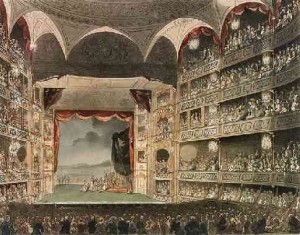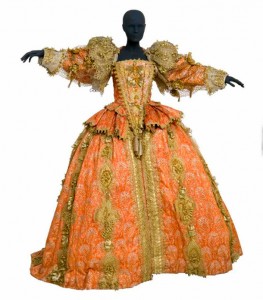Theatre. A building or outdoor area in which plays and other dramatic performances are given or the activity or profession of acting in, producing, directing, or writing plays. This became a flourishing activity in the 1900’s.
During the winter, in the Victorian era, there were only two theatres that were allowed to put on plays in London, the Covent Garden and Drury Lane. These theatres were also home to several other activities as well a drama, such as lion taming and horseback battles. Eventually, only two theatres became too small and theatre expansion began. Some smaller theatres, with a special license, were allowed to put on plays with music.
Auditoriums became a place of gathering and socializing, and nights could last up to 5 hours long. The night’s excitement evolved due to the development of the actors gestures, speech, and music. Eventually, laws changed so that theatres could stray from musicals, in hopes of civilizing the citizens and playwriters pieces. From there, Victorian theatre took off, growing all around England. Technology growth added to the intensity of the plays and how they affected the audience. To attract an upper class audience, auditoriums were built with separate entrances to each section so the upper class did not have to mingle with lower class guests.
Costumes:
Costumes often related to social status, so if you were playing the role of a king or queen in a Victorian play, you would be wearing expensive material, jewels, glamorous accessories, etc. There were also wigs and makeup available to all actors.
Plays and Playwriters in the Victorian Era
August Von Kotzebue
- Misanthropy and Repentance
Charles Dickens
- A Christmas Carol
- Oliver Twist
Douglas Jerrold
- Black Eyed Susan
Oscar Wilde
Links used:
http://www.bl.uk/romantics-and-victorians/articles/19th-century-
http://www.shakespearesglobe.com/uploads/files/2014/01/costumes_cosmetics.pdf
http://dictionary.reference.com/browse/theatre
Picture links:
http://www.angelpig.net/victorian/theatre.html
http://www.vam.ac.uk/content/articles/r/reflecting-historical-periods-in-stage-costume/
http://logicmgmt.com/1876/Victorian_theatre/Victorian_theatre_society.htmvv


Why were only two theaters allowed to be open in the winter? Why not all of them? Why did theaters need special licenses to have music played during the play?
I would have to do more extensive research on the specific subject but my guess is that those were the two main theatres at the time and all other places were small, family owned theatres. It seems almost like a business today, you need special a license to sell things in a business. I am not 100% sure of the reasons for the special laws, though.
This is truly fascinating. I had no idea that a license was required to be allowed to put on plays in a theater. Do you know why?
I’m not 100% sure, but my thoughts are that they didn’t want small, family owned businesses opening up little theatres and dominating the economics, but that is just a hypothesis.